Download Contents
Transcript
01last 2007.5.10 11:54 AM Page 1 C ontents 1. Before using your DANA Diabecare® II pump, infusion set and reservoir • Indications for use . . . . . . . . . . . . . . . . . . . . . . . . . . . . . . . . . . . . . . . . . . . . . . .3 • Safety precautions . . . . . . . . . . . . . . . . . . . . . . . . . . . . . . . . . . . . . . . . . . . . . . . 3 • Cleaning your DANADiabecare® II insulin pump . . . . . . . . . . . . . . . . . . . . . . . 5 • Explanation of “Warning”, “Caution”, and “Note” Symbols . . . . . . . . . . . . . . . . 5 • Contents of DANADiabecare® II insulin pump kit . . . . . . . . . . . . . . . . . . . . . .6 • Identification and description of your pump features . . . . . . . . . . . . . . . . . . . . . .7 • Easy Release Infusion set . . . . . . . . . . . . . . . . . . . . . . . . . . . . . . . . . . . . . . . . . .9 2. Set-up and basic functions • Inserting the battery . . . . . . . . . . . . . . . . . . . . . . . . . . . . . . . . . . . . . . . . . . . . . .8 • Suspending the pump by programming . . . . . . . . . . . . . . . . . . . . . . . . . . . . . . .18 • Explanation of display screens . . . . . . . . . . . . . . . . . . . . . . . . . . . . . . . . . . . . . .9 - Initial display . . . . . . . . . . . . . . . . . . . . . . . . . . . . . . . . . . . . . . . . . . . . . . .10 - Basic display . . . . . . . . . . . . . . . . . . . . . . . . . . . . . . . . . . . . . . . . . . . . . . . .10 • Setting bolus doses, basal rates and the clock . . . . . . . . . . . . . . . . . . . . . . . . . . 10 - Setting a bolus . . . . . . . . . . . . . . . . . . . . . . . . . . . . . . . . . . . . . . . . . . . . . .11 - Pre-setting meal boluses . . . . . . . . . . . . . . . . . . . . . . . . . . . . . . . . . . . . . . . .12 - Setting the basal rate . . . . . . . . . . . . . . . . . . . . . . . . . . . . . . . . . . . . . . . . . .14 - Setting the clock . . . . . . . . . . . . . . . . . . . . . . . . . . . . . . . . . . . . . . . . . . . . .15 • Checking bolus doses, basal rates and reviewing memory data . . . . . . . . . . . . .16 • Checking the battery life and remaining insulin amount . . . . . . . . . . . . . . . . . .17 • How to fill and insert a new reservoir . . . . . . . . . . . . . . . . . . . . . . . . . . . . . . . .21 - Filling the reservoir with insulin . . . . . . . . . . . . . . . . . . . . . . . . . . . . . . . . .19 - Inserting the linking screw into the reservoir and into the Dana pump . . . . .20 3. Use of the DANADiabecare ® II pump and infusion set .[Easy Release] • Priming the infusion set . . . . . . . . . . . . . . . . . . . . . . . . . . . . . . . . . . . . . . . . . .22 • Inserting, disconnecting and reconnecting infusion set . . . . . . . . . . . . . . . . . . . 25 - Inserting the infusion set . . . . . . . . . . . . . . . . . . . . . . . . . . . . . . . . . . . . . . .25 - Disconnecting the infusion set . . . . . . . . . . . . . . . . . . . . . . . . . . . . . . . . . . .30 - Reconnecting the infusion set . . . . . . . . . . . . . . . . . . . . . . . . . . . . . . . . . . . .34 • Delivering a bolus . . . . . . . . . . . . . . . . . . . . . . . . . . . . . . . . . . . . . . . . . . . . . . .28 • Programming temporary basal rates during exercise, illness, menses or stress .29 • Removing the infusion set . . . . . . . . . . . . . . . . . . . . . . . . . . . . . . . . . . . . . . . .27 .[Soft-Release-ST ] • Indications for use . . . . . . . . . . . . . . . . . . . . . . . . . . . . . . . . . . . . . . . . . . . . . .28 • Precautions . . . . . . . . . . . . . . . . . . . . . . . . . . . . . . . . . . . . . . . . . . . . . . . . . . . .32 • Instructions . . . . . . . . . . . . . . . . . . . . . . . . . . . . . . . . . . . . . . . . . . . . . . . . . . . .33 - Connecting the Soft-Release-ST infusion set to the reservoir . . . . . . . . . . . .33 - Use of the DANA Diabecare® II pump and Soft-Release-ST infusion set . . . .33 - Using the disconnect feature . . . . . . . . . . . . . . . . . . . . . . . . . . . . . . . . . . . .34 - Removing the infusion set . . . . . . . . . . . . . . . . . . . . . . . . . . . . . . . . . . . . . .35 01last 2007.5.10 11:54 AM Page 2 .[Soft-Release-R ] • Indications for use . . . . . . . . . . . . . . . . . . . . . . . . . . . . . . . . . . . . . . . . . . . . . .36 • Precautions . . . . . . . . . . . . . . . . . . . . . . . . . . . . . . . . . . . . . . . . . . . . . . . . . . . .37 • Instructions . . . . . . . . . . . . . . . . . . . . . . . . . . . . . . . . . . . . . . . . . . . . . . . . . . . .38 - Connecting the Soft-Release-R Infusion set to the reservoir . . . . . . . . . . . . .38 - Use of the DANADiabecare® II pump and Soft-Release-R Infusion set . . . .38 - Using the disconnect feature . . . . . . . . . . . . . . . . . . . . . . . . . . . . . . . . . . . .39 - Removing the infusion set . . . . . . . . . . . . . . . . . . . . . . . . . . . . . . . . . . . . . .40 .[Locking the pump ] . . . . . . . . . . . . . . . . . . . . . . . . . . . . . . . . . . . . . . . . . . . . .40 4. Troubleshooting • When hypoglycemia (low blood sugar) occurs . . . . . . . . . . . . . . . . . . . . . . . . .41 • When hyperglycemia (high blood sugar) occurs . . . . . . . . . . . . . . . . . . . . . . . .42 • Problems - corrective actions . . . . . . . . . . . . . . . . . . . . . . . . . . . . . . . . . . . . . .43 • List of alarms and audible signals . . . . . . . . . . . . . . . . . . . . . . . . . . . . . . . . . . .45 5. Specifications, Symbols, Warranty • General specifications . . . . . . . . . . . . . . . . . . . . . . . . . . . . . . . . . . . . . . . . . . . .46 • Classification and compliance with standards . . . . . . . . . . . . . . . . . . . . . . . . . .46 • Universal Symbols . . . . . . . . . . . . . . . . . . . . . . . . . . . . . . . . . . . . . . . . . . . . . .47 •Warranty . . . . . . . . . . . . . . . . . . . . . . . . . . . . . . . . . . . . . . . . . . . . . . . . . . . . . .48 01last 2007.5.10 11:54 AM Page 3 Before using yourDANADiabecare® II pump, infusion set and reservoir Indications for Use Federal (US) law restricts this device to sale by or on the order of a physician. INDICATIONS FOR USE: The DANA Diabecare® II insulin pump, infusion set and reservoir are intended for the continuous delivery of insulin for the management of diabetes mellitus. It is not intended for the delivery of blood or blood products. Other infusion sets may be used if DANA Diabecare Universal Adaptor is utilized. Please contact 1-866-342-2322 for details. Safety Precautions ➤ The DANA Diabecare® II is classified as an internal powered equipment BF type in accordance with standard IEC 60601-1 (Medical Electrical Equipment, General Requirements for Safety). Patients must not open the pump housing or handle any internal components. ➤ The DANADiabecare® II insulin pump is intended for use with a proprietary infusion set, reservoir, and other accessories specified in this booklet. Do not use the pump with any other infusion system or accessories. ➤ If you experience any trouble with the pump, remove the battery from the pump immediately and contact your sales representative. ➤ Use the pad of your finger to press the buttons.DO NOTuse sharp objects to press the buttons. 3 01last 2007.5.10 ➤ 11:54 AM Page 4 Avoid the following conditions for safe storage and transport of theDANA Diabecare® II : ◆ ◆ ◆ ◆ ◆ ◆ ◆ ◆ Temperatures below 32.9° F or above 104° F. Humidity above 90%. Exposure to dirt or excessive dust. Exposure to salty environment. Exposure to explosive gas. Exposure to rough handling. Exposure to direct sunlight. Atmospheric pressure below 500mmHg or above 1060mmHg. ➤ The pump must not be used in the presence of intense electromagnetic fields, such as those generated by certain electrically powered medical devices. The pump should be removed prior to the user having a CTScan, MRI or X-ray. ➤ The pump comes with factory default settings for alarms, maximum daily totals, basal and bolus doses. These settings may be modified by a healthcare professional or the user through the Guided Management Programming Mode. ➤ Remove the battery for long-term storage. ➤ The reservoir and infusion set are intended for single use only. Do not reuse either the reservoir or infusion set. ➤ Change the reservoir and the infusion set regularly, as recommended by your healthcare professional. Do not use either for longer than 72 hours. ➤ The shelf life of the reservoir and the infusion set is 3 years. Please check the expiration dates regularly and dispose of any expired accessories. 4 01last 2007.5.10 11:54 AM Page 5 Cleaning your DANA Diabecare® IIinsulin pump ➤ The outside of the pump should be cleaned monthly. ➤ When cleaning the pump, use a cloth moistened with water or a neutral pH detergent and wipe it with a dry cloth. ➤ Do not use thinner, alcohol, benzene or similar solvents. ➤ Please rinse your pump off with clean water after swimming, or after exposure to dust, soot or other material that adheres to the pump. ➤ Never insert a cloth or liquid into the battery compartment. ➤ If the linking screw appears discolored, discard and use a new one. Contact technical support at 1-866-326-2832 if additional screws are needed. Explanation of “Warning,” “Caution,” and “Note” Symbols “Warning” indicates the presence of a hazard which can cause severe personal injury, death or substantial property damage if the warning is ignored. “Caution” indicates the presence of a hazard which will or can cause minor personal injury or property damage if the warning is ignored. “Note” advises the user of installation, operation or maintenance information which is important but not hazard-related. 5 01last 2007.5.10 11:54 AM Page 6 Contents of the DANA Diabecare® IIInsulin Pump Kit INFUSION SETS (6) INSULIN PUMP RESERVOIR (6) LINKING SCREW (2) BATTERY (2) BLACK CLOTH BELT TRANSPARENTCASE MEFIX (3) SHOWER POUCH TEGADERM TM (2) BRAPOUCH INSULIN SCALE TRAY ADHESIVE TAPE (1) LEATHER CASES (2) RESERVOIR CAP BATTERY COMPARTMENTKEY (2) USER MANUAL Additional accessories may be purchased separately. 6 01last 2007.5.10 11:54 AM Page 7 Identification and Description of Your Pump Features ➀ Reservoir Compartment 1. Reservoir Compartment: The reservoir and linking screw are inserted in this compartment. Turn cap clockwise to open. ② Battery Compartment 2. Battery Compartment : The battery is inserted in this compartment. Turn cap counterclockwise to open. ➂ Control Panel 3. Control Panel : Contains the four buttons which are used to increase and decrease settings, switch screens and select functions. ➃ LCD Screen 4. LCD Screen: Displays status of system features and system messages, and serves as the user interface with pump software. Lights automatically when any button is pressed. ➂ ➀ UP ② DOWN Press to increase insulin dosages, time and date, and Guided Management functions. ➀ Press to decrease insulin dosages, time and date, and Guided Management functions. UP NEXT ② ➂ NEXT Press to move to the next choice on the LCD . SEL Press to select the function highlighted on the LCD. ➃ DOWN SEL ➃ 7 01last 2007.5.10 11:54 AM Page 8 2. Set-up and basic functions Inserting the Battery Follow these steps 1. Open the battery compartment by inserting the battery key into the battery cap and turning counterclockwise. 2. Insert the battery with the positive end down into the pump. 3. Close the battery cap by turning the battery key clockwise until tight and flush with the pump. Failure to tighten the battery cap may result in water entering the battery compartment, causing the pump to malfunction. Alway keep at least one power kit (2 batteries) available for backup. The date on the battery is the manufacture date. The battery has a guaranteed shelf life of ten years. 8 01last 2007.5.10 11:54 AM Page 9 Explanation of the display screens INITIAL DISPLAY ➀ 1. Displays current time and date. ② 2. Displays remaining battery charge as 100%, 75%, 50%, 25%, or 0%. ➂ The remaining battery charge is updated only after you deliver a bolus. 3. Displays the amount of insulin remaining in the reservoir in units. (1ml=100 units). Push any of the control buttons while viewing the INITIAL DISPLAY and the BASIC DISPLAY will appear. BASIC DISPLAY ➀ 1. CHECK/REVIEW icon - Choose the picture of a magnifying glass to check basal rates, previous bolus doses, the last bolus, previous daily totals and prime history. 2. BOLUS icon - Choose the icon of a syringe to deliver meal bolus doses . ② ➂ ➃ 3. TEMPORARY BASAL icon - Choose the picture of a person for temporary changes in basal rates for exercising or other events. 4. SET / PROGRAM icon - Choose the picture of a sliding scale to set basal rates and preprogrammed bolus doses. The DANA Diabecare® II LCD screen will automatically go blank after one minute to conserve battery power. Push any of the control buttons to return to the INITIAL DISPLAY. Any button press will also activate the backlight for 10 seconds. 9 01last 2007.5.10 11:54 AM Page 10 Setting bolus doses, basal rates and the clock You cannot see the magnifying glass icon in first box that says ‘from the INITIAL DISPLAY screen press any of the control buttons and the BASIC DISPLAY screen will appear’. The CHECK/REVIEW icon will be highlighted. 1. In the BASIC DISPLAY screen press NEXT fig. 1 to change the highlighted icon. Press NEXT three times consecutively to transfer from Then press SEL to as shown in figure1. . 2. The SET/PROGRAM screen in figure 2 appears. You can select (basal rate) or fig. 2 (bolus) or (clock) . Press change the highlight from 10 BASIC DISPLAY SCREEN to NEXT to or to . Set SET/PROGRAM SCREEN 01last 2007.5.10 11:54 AM Page 11 Setting a bolus 1 . From the BASIC DISPLAY screen, go to the fig.1 SET/PROGRAM screen. In SET/PROGRAM press SEL when the Set is highlighted (figure 1). The bolus setting screen will appear as shown SET/PROGRAM SCREEN in figure 2. 1 1. Indicates that you are setting a bolus. fig.2 US. 27 MA. 160 PM09:00= 5.0u 2. Insulin amount of the bolus. 3. US indicates the amount of insulin used since midnight. MA indicates the maximum allowed daily insulin amount. 4. Time and amount refer to the previous bolus. 2. While in the BOLUS SETTING screen select the proper insulin dose by using UP and DOWN . The insulin dose appears in “units” in the bottom right hand corner. 3 4 2 Bolus BOLUS SCREEN 3. After setting your bolus doses press SEL . The bolus settings will be saved in the DANA memory. We recommend you confirm that your bolus setting is saved to memory by using the CHECK/REVIEWmode of the DANA Diabecare® II (See page 17 ). 11 01last 2007.5.10 11:54 AM Make sure to press Page 12 SEL after the bolus is set to save the setting. This setting is the amount of insulin that you will deliver the next time you bolus. It becomes the “default” bolus setting on your pump. You may increase or decrease your bolus prior to delivery but the bolus dose setting will not change unless you change it in the SET/PROGRAM screen. Remember that you can always increase or decrease your bolus prior to delivery. Pre - setting meal boluses If you or your healthcare professional have chosen the “pre-set” option in Guided Management, your BOLUS screen will appear differently. BREAKFAST BOLUS SCREEN This option permits you to pre-set boluses for breakfast, lunch and dinner. If you pre-set meal boluses, the following time periods correlate to the following schedule: Breakfast =1:00 am - 9:59 am Lunch = 10:00 am - 2:59 pm Dinner = 3:00 pm - 12:59 am LUNCH BOLUS SCREEN Any bolus given during the breakfast period will be pre-set for the amount selected for breakfast. If you have a snack or multiple meals within a time period, remember to adjust your bolus accordingly. 12 DINNER BOLUS SCREEN 01last 2007.5.10 11:54 AM Page 13 fig.1 1 . From the BASIC DISPLAY screen, go to the SET/PROGRAM screen. In SET/PROGRAM press when the SEL Set is highlighted (figure 1). The bolus setting screen will appear as shown SET/PROGRAM SCREEN in figure 2. 1 1. Indicates that you are setting a bolus for Breakfast (Brfst), Lunch or Dinner. (See 3 fig.2 preceding page for time periods.) 2. Insulin amount of the bolus. 4 3. US indicates the insulin amount used 2 since midnight. MA indicates the maximum allowed daily insulin amount. BREAKFAST BOLUS SCREEN 4. Time and amount refer to the previous bolus. 2. While in the BREAKFAST BOLUS screen select the 4. After setting all of your meal boluses pressSEL . proper insulin dose by using The meal bolus settings will be saved UP and DOWN .The insulin dose appears in “units” in the bottom right hand corner. 3. Press NEXT to go to the LUNCH BOLUS screen and follow step 2. Press NEXT to go to the DINNER BOLUS screen and in the DANAmemory. We recommend that you confirm that all adjusted settings were saved to memory by using the CHECK/REVIEW mode of the DANA Diabecare® II (See page 17 ). follow the same steps. 13 01last 2007.5.10 11:54 AM Page 14 Make sure to press SEL after the meal boluses are set to save the settings. The settings are the amount of insulin that you will deliver each time you bolus during the time periods indicated on page 13. They become the “default” bolus settings on your pump for each of these time periods. You may increase or decrease your meal boluses prior to delivery but the meal bolus settings will not change unless you change them in the SET/PROGRAM screen. Setting the basal rates 1. Press SEL when is highlighted (figure 1) fig.1 in the SET/PROGRAM screen. The BASAL RATE Set SETTING screen will appear as in figure 2. SET/PROGRAM 3 1. Chronological time which corresponds to the highlighted section of the basal profile. 1 fig.2 2. TB=32.9 is the basal calculator for a 24 hour period. TB=32.9 3. Basal Profile, which shows basal rates in a graph from midnight to midnight. 4. Basal Rate for the time period shown in ( graphed in ( 3 ) 14 1 and 2 4 BASALRATE SETTING SCREEN 01last 2007.5.10 11:54 AM Page 15 2. The Basal Profile appears in the lower right side of the screen. Use NEXT to move between the 24 3. After basal rates are set, press SEL to save the setting in the DANA memory. rates available - the corresponding chronological time will appear in the upper right corner. Use the DOWN and UP buttons to change the basal rate for the highlighted time period. Make sure to press SEL after the basal profile is set to save the settings! We recommend that you confirm all adjusted settings are saved to memory by using the CHECK/REVIEW mode of DANA Diabecare® II (See page 17 ) Setting the clock fig.1 1. From the BASIC DISPLAY, go to the SET/PROGRAM screen. Press highlight and press SEL to NEXT . fig.2 2. The CLOCK SETTING screen will appear as shown in figure 1. 3. Use NEXT to move between the year and month, as well as, hours and minutes and and DOWN UP to make the desired changes. After making the changes press SEL return to the BASIC DISPLAY screen. to You must set a.m. and p.m. correctly. If the clock shows 3:00 p.m. and you want 3:00 a.m. you must continue to press [UP] untill the screen reflects your desired change. Failure to do so might result in inappropriate basal insulin delivery for that time period. If you or your healthcare professional have chosen the 24HR option in Guided Management, your CLOCK SETTING screen will appear as shown in figure 2. 15 01last 2007.5.10 11:54 AM Page 16 Checking bolus doses, basal rates and reviewing memory data 1. In the BASIC DISPLAY screen press NEXT until the icon is highlighted as in figure 1. Then press SEL fig.1 . BASIC DISPLAY SCREEN 2. The icon will be highlighted as in figure 2 fig. 2 (if not, press NEXT to change the highlighted icon). Then press SEL Chk . CHECK/REVIEW SCREEN The icon is used for reviewing both basal rates and bolus settings. Do not select ,which is immediately to the right. If you selected this in error press NEXT to return to the BASIC DISPLAY, and go back to step 2. 3. The BASAL PROFILE screen (figure 3) fig.3 will appear. PressNEXT to move between basal TB=32.9 profiles and confirm settings. To review the previous meal bolus press SEL . BASAL PROFILE SCREEN 4. The BOLUS screen (figure 4) or MEAL BOLUS fig.4 US. 27 MA. 160 PM09:00= 5.0u screen (figure 5) will appear. The number will be the “default” bolus (figure 4) or pre-set meal Bolus bolus (figure 5). Press NEXT to move from one meal period to the next. Press SEL to review the history of the previous 50 boluses. BOLUS SCREEN fig.5 If your bolus and basal dose rate settings are incorrect please return to the BASIC DISPLAY and choose to make adjustments (see page 13 - Setting Bolus Doses and Basal Rates). 16 DINNER BOLUS SCREEN 01last 2007.5.10 11:54 AM Page 17 5. Use UP and DOWN to review the Bolus History including date, time and amount delivered. Press SEL to review the 50 previous Daily Totals. 6. Use UP and DOWN to review the Daily Total History including date and the total amount of insulin. Press SEL to review the 50 previous Prime Amounts. 7. Use UP and DOWN to review the Prime History including date, time and amount. Press SEL to check factory ship date and serial number. 8. Press SEL to return to the BASIC DISPLAY. Checking the battery life and remaining insulin amount fig.1 INITIAL DISPLAY SCREEN The battery life and remaining insulin amount can be confirmed in the INITIALDISPLAY screen. The INITIALDISPLAY in figure 1 shows that 250 units of insulin remain in the reservoir and that the battery is 100% charged. This screen is automatically display any time a button is pressed to activate the screen. 17 01last 2007.5.10 11:54 AM Page 18 Suspending the pump When you suspend the pump, it will beep 3 times every 4 minutes to remind you that no insulin is being delivered. 1. In the CHECK/REVIEW SCREEN press NEXT highlight fig. 1 as shown in figure 1. Chk Then press SEL . CHECK/REVIEW SCREEN 2. The pump will give an audible tone and the screen will indicate the pump is suspended. 3. To take the pump out of suspend, press SEL fig. 2 you will again hear an audible indicator and the BASIC DISPLAY will appear as shown in figure 2. 18 BASIC DISPLAY 01last 2007.5.10 11:54 AM Page 19 Filling and inserting a new reservoir Insulin Pump ▼ Transparent Case Reservoir Insulin Scale Tray ▼ Linking Screw Infusion Set ▼ Insulin ▼ Reservoir Cap Battery Key We recommend that you change the reservoir when there are 15 to 20 units of insulin remaining. Filling the reservoir with insulin 1. Place all materials on a clean, dry surface. 2. Remove the round cap at the end of the reservoir plunger and discard. Athin white reservoir cap will fall out of the plunger keep this cap for later use. Pull back on plunger to the line marked with the number 3 and push up and down three to four times to properly lubricate the reservoir. 3. Carefully remove the clear needle protective cover. Pull plunger down until you are at the desired amount of insulin needed then insert needle into the insulin vial and inject the air in the syringe into the vial. Draw out the desired amount of insulin. Withdraw the needle from the vial and place the clear needle protective cover back on the needle. 4. Remove any bubbles from the inside of the reservoir by gently tapping on the sides making the bubbles rise to the top of the syringe. Gently push on the plunger to remove the bubble at the top. 5. Remove the needle from the reservoir and cover with the thin white reservoir cap. Please dispose of the needle properly. Use only short acting insulin in your pump. 19 01last 2007.5.10 11:54 AM Page 20 Inserting the linking screw into the reservoir and into the Dana Pump 1. Insert and fit the plastic component of the linking screw into the cavity of the plunger. The screw must lie in the groove of the tray’s neck as in figure 1. In some cases you must manually adjust the screw length to match the neck before putting the reservoir in the tray. fig.1 Linking Screw Reservoir Cap Notch 2. Place the filled reservoir with the attached linking screw into the insulin scale tray as shown in figure 1. 3. Rotate until the end of the linking screw fits into the notch as shown in figure 1. Be sure to note the amount of insulin in the reservoir as indicated on the insulin scale tray and not on the reservoir body itself. You will need this number when you remove air from the infusion set by priming (page 24 ). The scale is in 0.2 cc increments. fig.2 Notch The tip of the linking screw, with the hexagonal (6 sided) end should enter the notch to point indicated by the red line, and no further(FIGURE 2). 4. Suspend your pump now and remove the old reservoir if you haven’t already done so. 5. Remove the reservoir and linking screw unit from the insulin tray. 20 01last 2007.5.10 11:54 AM Page 21 6. Insert the reservoir and linking screw unit into the DANA Diabecare® II pump as shown in figure 3. When inserting the reservoir slightly rotate right and left until the notch fittings on the side of the reservoir slide into place. Gently let the reservoir and linking screw fall into place. Next, screw (counterclockwise) the pump’s reservoir compartment cap in place and remove the small white reservoir cap from the end of the reservoir. fig.3 ➀ ② ③ Notch Fittings Do not push and/orforce the reservoirinto the pump. This could damage the motor drive and linking screw of the pump and could result in the loss of insulin from the reservoir. If attempts to reinsert the reservoir fail, try a new reservoir. 7. Remove the infusion set from its package. Be careful not to touch the connector to any object that would breach its sterility. fig.4 Connector 8. Screw the connector counterclockwise into the reservoir compartment until it is firmly in place (figure 4). You will quickly get accustomed to turning the reservoir compartment cap and connector counterclockwise. 21 01last 2007.5.10 11:54 AM Page 22 Use of the DANADiabecare II Pump and Infusion Set. ® Priming the infusion set 1. Always remember to change the reservoir and the infusion set at the same time. 2. You must always prime when you do this. fig.1 1. Turn on the pump screen by pressing any button. Press NEXT to enter the BASIC DISPLAY screen as shown in figure 1. Highlight and press SEL . BASIC DISPLAY SCREEN fig.2 2. In the CHECK / REVIEW screen press NEXT to highlight Then press SEL as shown in figure 2. . Chk CHECK/REVIEW SCREEN 3. You will now see the FILLING screen display as shown in figure 3. Use UP and DOWN fig.3 to adjust the amount of insulin (in cc’s) Refill FILLING SCREEN in the new reservoir you just filled and placed in the DANA pump. 22 The 2.5 cc is a preset default setting. Remember to adjust this setting up or down to the amount you actually have placed in the reservoir according to the insulin scale tray. 01last 2007.5.10 11:54 AM Page 23 4. Connecting your infusion set to the pump Take the infusion set from its package. Be careful not to touch the connector to any object that would breach its sterility. Screw the Pump Connector counterclockwise into the reservoir compartment until it is firmly in place. fig.4 5. Press SEL and stand the pump on end as in figure 4. The PRIME screen will now appear as in figure 5. 6.Take the needle end of the infusion set in one hand and press UP twice on the pump with the other hand. 7. You will hear the pump begin to infuse insulin into the infusion set The insulin amount on the PRIME screen as in figure 6 will increase slowly and “bubbles” will appear at the end of the reservoir on the display screen as in figure 6. When you see several drops of insulin appear at the end of the infusion set, press DOWN to stop the flow of insulin. The pump must be primed 10 units for the proper safety checks to be performed. 8. Press SEL fig.5 Prime PRIME SCREEN fig.6 to return to the BASIC DISPLAY. Prime Always check and confirm all basal and bolus settings after changing the insulin reservoir (page 19 ). Visually confirm there is no air in the infusion set tubing. Do not allow insulin to come in contact the infusion set dressing. The DANA pump will only allow two automatic prime sequences in 12 hours. See Troubleshooting, page 44 . Make sure to prime when you use a new infusion set or to remove air from the tubing. If you prime to remove air from the tubing, make sure you are disconnected. 23 01last 2007.5.10 11:54 AM Page 24 Easy Release Infusion Set Needle Needle guide Tubing Easy Release Luer Connector The Easy Release Infusion Set is available in several tubing lengths and needle lengths. Your healthcare professional will help you select which is best for you. 24 01last 2007.5.10 11:54 AM Page 25 Inserting, disconnecting and reconnecting the EasyRelease Infusion Set The Easy Release infusion Set is a stainless steel needle set. Asmall needle is inserted at 90 degrees into the skin. This set is very easy to use and there is no possibility of crimping with this set. 1. Wash your hands before assembling the supplies. Use sterile technique when inserting the infusion set 2. Choose an insertion site on your abdomen at least 2 inch away from the navel. Clean the site with an alcohol swab and allow to dry. 3. Follow the instructions on page 23 to prime the Easy Release infusion set which removes air in the tubing. 4. Hold the infusion set in your fingers at the guide as shown in picture 2. Carefully remove the needl’s protective cover, and the paper backing from the adhesive dressing. 5. With your other hand pinch the tissue around the insertion site between your thumb and finger as shown in picture3. Push the needle deeply into this tissue and secure with adhesive dressing. Inserting the infusion set 1 2 3 4 6. Tape the infusion set to the body with adhesive tape 1 to 2 inches away from the insertion site (safety loop). This prevents accidental dislodging of the infusion set. 1. You should not feel pain when you touch the insertion area after the needle has been inserted. 2. You may feel some pain at the insertion site if the infusion set is not secured well to your body. Do not use the infusion set if its package has been damaged, inadvertently opened or become wet. Do not reuse the infusion set. Reinsertion could cause tearing of the cannula that would result in unreliable insulin delivery. 25 01last 2007.5.10 11:54 AM Page 26 Disconnecting the EasyRelease Set 1. Allow the pump to continue basal delivery, or place your pump in suspend if your diabetes professional advises. 2. Grasp the disconnect portion of the Easy Release tubing and slide the ring/collar back, towards the pump. 3. Press the rubber stopper onto the needle end of the disconnected tubing (the end still connected to the pump). Reconnecting the EasyRelease Set 1. Wipe the tip of tubing connected to you with an alcohol swab after removing the rubber cap. 2. Remove the rubber stopper from the tubing connected to the pump. 3. Before reconnecting, program the pump to bolus 0.5 units of insulin and watch to ensure that a drop is visible from the needle tip. 4. Repeat as necessary until you see insulin. 4. Press the rubber cap onto the tubing connected to you. 5. Push together the two ends of the easy release tubings, and slide the ring/collar back tightly. 6. Check your blood sugar level. Do not disconnect from your pump for more than one hour without disconnect guidelines from your healthcare team. Continue to check blood glucose levels while disconnected and after reconnecting. You may need to compensate for missed insulin. 26 01last 2007.5.10 11:54 AM Page 27 Removing the infusion set 1. Suspend the pump. (See page 11). Carefully remove all adhesive tape from the infusion line and needle insertion site. fig.1 2. Grab the needle guide in the same way as if you were inserting it. Use your other hand to put slight pressure on the tissue around the insertion area. Gently pull the needle out as in figure 1. fig.2 3. Remove the infusion set from the pump by turning the connector clockwise and pulling upwards as in figure 2. 4. Please dispose of the used infusion set according to your local regulations. 27 01last 2007.5.10 11:54 AM Page 28 Soft-Release-ST Indications for u s e The Soft-Release-STis soft cannula insulin infusion set. It may be inserted at any angle between 15 degrees and 30 degrees, depending on your body type, comfort and instructions from your healthcare professional. 1. 2. 3. 4. 5. 6. 7. 28 Needle Guide withAdhesive Needle Cover Teflon (Soft Cannula) Introducer Needle Site Connector Infusion Set Connector Spring Clip 8. Connection Needle 9. Tubing 10. Pump Connector 11. Site Connector Cover 12. Infusion Set Connector Cover 01last 2007.5.10 11:54 AM Page 29 Instructions I n s e rting, Disconnecting and Reconnecting the Soft Release-ST Infusion Set 1. Wash your hands before assembling the supplies. Use sterile technique when inserting the infusion set. (Figure 1) 2. Choose an insertion site on your abdomen at least 2 inch away from the navel. Clean the site with an alcohol swab and allow to dry. (Figure 1) (Figure 2) 3. Hold the infusion set in your fingers at the guide. Carefully remove the Needle Cover and Paper backing on the adhesive. (Figure 2, 3) (Figure 3) 4. With your other hand pinch the tissue around the insertion site between your thumb and finger. Push the needle deeply into this tissue. (Figure 4) (Figure 4) 5. To remove the Introducer Needle, place a finger on each side of the Needle Guide, one on either side of the Introducer Needle. To make withdrawing the Introducer Needle easier, rotate the needle a half turn, then pull the needle straight out (Figure 5) and discard properly. (Figure 6) (Figure 5) 6. Secure the Needle Guide to the insertion site with adhesive tape. (Figure 7) (Figure 6) (Figure 7) 29 01last 2007.5.10 11:54 AM Page 30 ➤ Follow the instructions on page 23 to prime the Soft-Release-ST, which removes air in the tubing. When a drop of insulin appears at the Connection Needle, priming is complete. (Figure 8) (Figure 8) ➤ Gently slide the Infusion Set Connector over the Site Connector, pressing lightly on the Spring Clips on either side of the Infusion Set Connector. The Connection Needle should glide into the Site Connector, and the two units should snap together. (Figure 9) ➤ Tape the infusion set to the body with adhesive tape 1 to 2 inches away from the insertion site (safety loop). This prevents accidental dislodging of the infusion set. (Figure 9) Do not cover the Catheter Hub with tape. If the Catheter Hub is covered with tape, the release, or disconnect feature cannot be used. Disconnecting the infusion set ➤ Place the pump in SUSPEND unless your healthcare professional instructs you otherwise (See page 19). ➤ Grasp each side of the Infusion Set Connector, pressing gently on the Spring Clips. Pull the Infusion Set Connector Cover into the Site Connector. (Figure 10) ➤ Push the Infusion Set Connector Cover onto the Connection Needle. Make sure that this is done without bending the Connection Needle. (Figure 11) This prevents insulin from dripping out at the release site, and keeps the Connection Needle clean. ➤ Insert the Site Connector Cover into the Site Connector. (Figure 12) (Figure 10) (Figure 11) ➤ Put your pump in a safe place until you are ready to reconnect. (Figure 12) 30 01last 2007.5.10 11:54 AM Page 31 Reconnecting the Soft Release ST Infusion Set ➤ Wipe the tip of the Site Connector with an alcohol swab after removing the Site Connection Cover. ➤ Remove the Infusion Set Cover from the Infusion Set Connector. (Figure 13) ➤ Before reconnecting, program the pump to bolus 0.5~1 Unit of insulin and watch to ensure that a drop is visible from the Connection Needle tip. ➤ Repeat the bolus as necessary until you see the insulin. ➤ Gently slide the Infusion Set Connector over the Site Connector, pressing lightly on the Spring Clips on either side of the Infusion Set Connector. The Connection Needle should glide into the Site Connector, and the two units should snap together. (Figure 13) Removing the Soft Release ST Infusion Set ➤ Place the pump in SUSPEND. Carefully remove adhesive tape from the tubing and needle insertion site. ➤ Grab the Soft-Release-STNeedle Guide in the same way as if you were inserting it. Use your other hand to apply slight pressure on the tissue around the insertion area. Gently pull the cannula out. ➤ Remove the infusion set from the pump by turning the Pump Connector clockwise and pulling upwards. ➤ Please dispose of the used infusion set according to your local regulations. 31 01last 2007.5.10 11:54 AM Page 32 Soft-Release-R 1. 2. 3. 4. 5. 6. 7. 32 Needle Guide withAdhesive Needle Cover Teflon Soft Cannula Introducer Needle Site Connector Infusion Set Connector Spring Clip 8. 9. 10. 11. 12. 13. Connection Needle Tubing Pump Connector Site Connector Cover Infusion Set Connector Cover Needle Protective Cover for dispose 14. Bypass Needle 01last 2007.5.10 11:54 AM Page 33 Instructions Connecting the Soft-Release-R Infusion Set to the Reservoir ➤ Take out the Soft-Release-R Infusion Set from its package. Be careful not to touch the connector to any object that would breach its sterility. ➤ Screw the Pump Connector counterclockwise into the reservoir compartment until it is firmly in place. ➤ Connect the site connector to the infusion set connector. I n s e rting, Disconnecting and Reconnecting the Soft Release R Infusion Set 1. Wash your hands before using the supplies. Use sterile technique when inserting the infusion set. 2. Choose an insertion site on your abdomen at least 2 inch away from the navel. Clean the site with an alcohol swab and allow to dry. (Figure 1) 3. Follow the Dana Diabecare®II Insulin pump user manual to prime the (Figure 1) (Figure 2) Soft-Release-R for removing air in the infusion set. When a drop of insulin appears at Bypass Needle air removing is complete.(Figure 2) 4. Hold the infusion set in your fingers at the Needle Guide. Carefully remove the Needle Cover(Figure 3) and paper backing of the self adhesive.(Figure 4) 5. With your other hand pinch the tissue around the insertion site between your thumb and finger. Insert the needle quickly, at a 90° angle (Figure 3) (Figure 4) straight into infusion site. Watch the Teflon (soft cannula) during insertion to assure that it goes in smoothly without kinking or crimping. (Figure 5) 6. Before withdrawing the Introducer Needle, place the tape over the SoftRelease-R. 7. To remove the Introducer Needle, place a finger on each side of the Needle Guide with Adhesive, one on either side of the Introducer (Figure 5) (Figure 6) Needle. To make withdrawing the Introducer Needle easier, rotate the needle a half turn pull the needle straight out. 8. Dispose introduce needle in a safe manner. You may use the Needle Protective Cover for dispose provided to cover the steel needle.The Introduce Needle and Needle Protective Cover are made to lock together. (Figure 7) 9. Tape the infusion set to the insertion site with adhesive tape at.This prevents accidental dislodging of the infusion set. (Figure 8) (Figure 7) (Figure 8) 33 01last 2007.5.10 11:54 AM Page 34 Disconnecting the Soft-Release-R Infusion Set 1. Place the pump in SUSPEND unless your healthcare professional instructs you otherwise (see page 19). 2. Grasp each side of the Infusion Set Connector, pressing gently on the Spring Clips. Pull the Infusion Set Connector out of the Site Connector (Figure 9) 3. Push the Infusion Set Connector Cover onto the Connection Needle. Make sure that this is done without bending the Connection Needle. This prevents insulin from dripping out at the release site and keeps the Connection Needle clean.(Figure 10) (Figure 9) (Figure 10) 4. Insert the Site Connector Cover into the Site Connector. (Figure 1) 5. Put your pump in a safe place until you are ready to reconnect. (Figure 11) Reconnecting the infusion set 1. Wipe the tip of the Site Connector with an alcohol swab after removing the Site Connection Cover. 2. Remove the Infusion Set Cover from the Infusion Set Connector. 3. Before reconnecting, program the pump to bolus 0.5~1Unit of insulin and watch to ensure that a drop is visible from the Connection Needle tip. 4. Repeat the bolus as necessary until you see the insulin. (See detailed instructions in the Dana Diabecare®II User Manual) 5. Gently slide the Infusion Set Connector over the Site Connector, pressing lightly on the Spring Clips on either side of the Infusion Set Connector. The Connection Needle should glide into the Site Connector, and the two units will snap together. (Figure 12) (Figure 12) 34 01last 2007.5.10 11:54 AM Page 35 Removing the Soft-Release-R Infusion Set 1. Place the pump in SUSPEND. Carefully remove the adhesive tape from the Tubing and needle insertion site. 2. Grab the Soft-Release-R Needle Guide in the same way as if you were inserting it. Use your other hand to apply slight pressure on the tissue around the insertion area. Gently pull the needle out. 3. Remove the infusion set from the pump by turning the Pump Connector clockwise and pulling upwards. 4. Please dispose of the used infusion set according to your local regulations. Locking and unlocking the pump This function may be used to prevent an accidental change in settings. It is recommended for children or anyone who wants or needs to be prevented from inadvertently changing settings. 1.In the CHECK/REVIEW screen press NEXT highlight Then press SEL . icon as shown in figure 1. 2.The screen will indicate the pump is locked as shown in figure 2. 3.To unlock the pump, press UP , SEL , NEXT ,and DOWN sequentially. Then the Lock-out screen appears as shown in figure 3. 4. Select the proper code (Default:1234) by using 5. Press SEL UP , DOWN ,and NEXT as shown in figure 4. .. The pump is now unlocked. When the pump is “locked”, basal delivery continues. You cannot set or deliver a bolus however. fig.1 fig.3 fig.2 fig.4 To remove this option, refer to the Guided Management Healthcare Professional Manual. 35 01last 2007.5.10 11:54 AM Page 36 General Precautions for all infusion sets 1. Change the reservoir and the infusion set regularly, as recommended by your healthcare professional. Do not use either for longer than 72 hours. 2. The reservoir and infusion set are intended for single use only. Do not reuse either the reservoir or infusion set. 3. Do not use the reservoir or infusion set if the package has been damaged, inadvertently opened, or become wet. 4. The shelf life of the reservoir and the infusion set is 3 years. Please check the expiration dates regularly and dispose of any expired accessories. 5. Do not disconnect from your pump for more than one hour without discussing with your healthcare professional on how you should compensate for any the missed insulin or medication. Please remember that while disconnected from the pump, no insulin is being infused. Carefully monitor blood glucose levels during the period of detachment and after reattachment. 6. Check the infusion site often for redness, irritation, and inflammation. 7. Remember to prime at least 10 unites to permit the pump to perform an additional series of safety checks. Soft-Release-ST Catalogue Number 36 Total tubing length 70cm 110cm Soft cannula length 19mm 19mm Catalogue number SR102 SR112 01last 2007.5.10 11:54 AM Page 37 fig.1 Delivering a bolus 1.In the BASIC DISPLAY screen press until the NEXT BASIC DISPLAY SCREEN icon is highlighted as in figure 1. Then press SEL . 2. Confirm the amount of insulin to be delivered in the bottom right corner of the BOLUS screen (figure 2 and figure 3). If the insulin dose is not correct you may make the desired adjustments to the bolus setting by using and DOWN Remember UP the adjustment will not change the setting. It will only change the bolus that you are delivering immediately. fig.2 US. 27 MA. 160 PM09:00= 5.0u Bolus BOLUS SCREEN fig.3 DINNER BOLUS SCREEN fig.3 3. Use UP and DOWN to program the number of hours Temp to temporarily change the basal rate (figure 3). After making the desired adjustment press SEL . TEMPORARY BASALSCREEN 4. The temporary basal ratewill remain in effect for the desired number of hours and will be indicated in thebasic display by the“v” mark in the EXERCISE / TEMPORARY BASAL icon figure 4). 5. If you want to cancel the temporary basal choose fig.4 BASIC DISPLAY with TEMPOR BASAL SCREEN fig.5 in the basic display and press SEL . Adjust the hour setting to “0” and press SEL . The BASIC DISPLAYscreen in figure 5 will appear. Note that the “v” is no longer on return to 100%. . The basal rate will automatically BASIC DISPLAY without TEMPORARY BASALSCREEN If you reset the clock after setting a temporary basal, you must reset the temporary basal. 37 01last 2007.5.10 11:55 AM 3. Press SEL Page 38 . When you see the word “select” on the BOLUS screen, press SEL fig.4 again to begin delivery. The screen in figure 4 will Deliver appear. DELIVERY SCREEN You must eat your meal after the meal bolus has been delivered (regular insulin users after 30 minutes/fast-acting insulin users immediately). The DANA pump can be programmed in Guided Management to deliver a reminder melody after the bolus delivery. To stop the melody push any button once. If you want to stop a bolus during delivery, you may push UP , or DOWN button. Programming temporary basal rates during exercise, illness, menses orstress 1. In theBASIC DISPLAYscreen press until NEXT fig.1 is highlighted as in figure 1. Then press SEL . BASIC DISPLAY 2. Use UP and DOWN to temporarilychange the basal rate (figure 2). The number in the bottom right corner of the screen (200%, 175%, 150%, 125%, 100%, 75%, 50%, 25%, 0%) indicates the amount of insulin which will be infused during the temporary basal period. The % is added to or subtracted from your regular basal rate. For example, if your basal rate is 4 units an hour, a temporary basal of 75% will give you 3 units per hour; a rate of 150% will give you 6 units per hour. After making the desired adjustment, press SEL . 38 fig.2 Temp TEMPORARY BASAL SCREEN 01last 2007.5.10 3. Use UP 11:55 AM and DOWN Page 39 to program the number of hours fig.3 temporarily change the basal rate (figure 3). After making the desired adjustment press SEL . 4. The temporary basal ratewill remain in effect for the desired number of hours and will be indicated in thebasic display by the“v” mark in the EXERCISE /TEMPORARY BASAL icon figure 4). Temp TEMPORARY BASALSCREEN fig.4 5. If you want to cancel the temporary basal choose in the basic display and press SEL . Adjust the BASIC DISPLAY with TEMPOR BASAL SCREEN hour setting to “0” and press SEL . The BASIC DISPLAYscreen in figure 5 will appear. Note that the “v” is no longer on return to 100%. fig.5 . The basal rate will automaticallyNEXT SEL If you reset the clock after setting a temporary basal, you must reset the temporary basal. BASIC DISPLAY without TEMPORARY BASAL SCREEN 39 01last 2007.5.10 11:55 AM Page 40 Locking and unlocking the pump This function may be used to prevent an accidental change in settings. It is recommended for children or anyone who want or needs to be prevented from inadvertantly changing settings. 1.In the CHECK/REVIEW screen press NEXT highlight Then press SEL . icon as shown in figure 1. 2.The screen will indicate the pump is locked as shown in figure 2. 3.To unlock the pump, press UP , ,and SEL, NEXT sequentially. The Lock-out screen appears as shown DOWN in figure 3. 4. Select the proper code (Default:1234) by using 5. Press SEL UP , DOWN ,and NEXT as shown in figure 4. .The pump is now unlocked. When the pump is “locked”, basal delivery continues. You cannot set or deliver a bolus however. fig.1 fig.3 40 fig.2 fig.4 01last 2007.5.10 11:55 AM Page 41 Troubleshooting When hypoglycemia (low blood sugar)occurs What is hypoglycemia (low blood sugar)? Hypoglycemia occurs when the blood sugar level is low. Anyone using insulin should be familiar with the symptoms and treatment of hypoglycemia. The main symptoms of hypoglycemia. Headache and dizziness. Sweating. Shaking. Hunger. Tingling / numbness. Nausea or vomiting. Fast heart rate. Confusion. What to do in case of hypoglycemia 1. Check your blood sugar level. 2. If the blood sugar level turns out to be low, treat with carbohydrates in accordance with the instructions of your diabetes professional. 3. Check your blood sugar level again in 15-20 minutes. If it recovers to normal, no immediate action is needed. 4. If not, refer to step 2 and retest in 15 minutes. 5. If hypoglycemia appears several hours before a meal, check with your diabetes professional to adjust basal rates or meal planning. If hypoglycemia does not resolve contact your health care professional. POSSIBLE CAUSE Increased physical activity SUGGESTED RESPONSE Consult with your diabetes professional to make adjustments for increase activity. You may choose to use or modify temporary basal rate or decrease meal bolus prior to activity. Eating less Consult with your diabetes professional to adjust basal rates or meal boluses to more accurately reflect your current intake. Alcohol consumption When alcohol is consumed, make sure that food is also consumed. Alcohol may cause hypoglycemia. Test your blood sugar more frequently. Low blood sugar after disconnecting infusion set Verify that connection and disconnection were performed in accordance with manufacturer’s instruction. Remember to verify insulin at the needle by bolusing 0.5 units before reconnecting. User error or programming error Check and review your bolus history and basal rates. Check with your diabetes professional to make sure that your bolus is properly calculated as well as your basal rates. 41 01last 2007.5.10 11:55 AM Page 42 When hyperglycemia (high blood sugar) occurs What is hyperglycemia (high blood sugar)? Hyperglycemia (high blood sugar) can occur due to any interruption in the delivery of insulin. It is important to know that if there is no insulin delivery you may experience an increase in your blood sugar which if undetected or untreated may cause DKA(diabetic ketoacidosis). The main symptoms of DKA Nausea Vomiting Increased drowsiness Difficulty breathing Dehydration Abdominal pain. What to do in case of high blood sugar 1. 2. 3. 4. Check your blood sugar level. If your blood sugar is above 240, check urine for ketones. Check your pump to see what might be the cause. If your blood sugar remains high, take an injection of fast-acting insulin and contact your diabecare professional. POSSIBLE CAUSE Empty reservoir Visually check display screen for remaining insulin and also visually check reservoir in pump. Replace reservoir immediately. Insulin leakage at infusion site or disconnection site or connection to pump Examine infusion site to make sure that there is no leakage. Also examine the connection of the infusion set to the pump and the infusion set connector. Pinched or obstructed infusion set Change the infusion set Incorrect programming Verify the basal/bolus delivery and verify memory including temporary basal. Programming or user error 42 SUGGESTED RESPONSE Make sure there are no air bobbles in reservoir. Monitor your blood sugar frequently and verify that basal programming and bolus programming are correct. Make sure cartridge is not empty and make sure the clock settings are correct. Check for leaking at the infusion site, the disconnect site and the connection to the pump. Check battery indicator and replace battery if needed. Examine infusion set for pinching or blockage. Look and listen to see if the pump is in suspend. Verify that insulin is clear and if cloud or past an expiration date, change reservoir and infusion set immediately. 01last 2007.5.10 11:55 AM Page 43 The user should never be connected to the pump during troubleshooting. PROBLEMS TROUBLESHOOTING PUMPMESSAGES AND FUNCTIONS 1. LCD Abnormal (Power Low) Screen will not display or displays only partially ➤ REPLACE BATTERY - An abnormal LCD can occur when the figure.1 2. LOW RESERVOIR screen appears. figure.2 Low Reservoir battery charge is low. Check the remaining battery charge after you administer a bolus dose (Figure 1). If the remaining charge is 25% or less, please change the battery. The life span of the battery is usually 1 to 2 months, but varies among users. Some batteries are known to still show a full charge after two months even though they are low on charge. To avoid any battery mishaps we recommend that you change the battery every two months or whenever there is a display problem with your screen. ➤ CHANGE RESERVOIR- The low reservoir screen in figure 2 will appear when there are approximately 20 units remaining. The pump will alarm. Make a visual confirmation of remaining insulin through the reservoir cavity window on the side of pump. After confirming that the reservoir is low, insert a new reservoir in the pump following the instructions on page 21. For safety we recommend that you change the reservoir when there are 15 to 20 units of insulin remaining. ➤ SUSPEND THE PUMP, REMOVE INFUSION SET, CHECK YOUR 3. “Error” screen appears figure.3 Error 4. SYSTEM ERROR BLOOD SUGAR AND CHECK THE FOLLOWING : 1. Check for low battery charge. Change battery if charge is 25% or less. If this does not correct the error go to step two. 2. Check the reservoir amount. If less than 10 to 15 units of insulin remain in the reservoir, replace it. If this does not correct the error go to step three. 3. Check for occlusion of the infusion set. Visually check for any possible occlusion of the infusion set and take corrective measures (unink tubing, check for air bubbles, etc.). If this does not resolve the problem, change the reservoir and infusion set. ➤ Take out battery and reinsert. If the “Error” message continues to appear after taking all of the above Measures, remove the pump and contact 1-866-326-2832. 5. PUMP WILL NOT PRIME ➤ If you are using the Easy Release needle infusion set and you cannot prime beyond the disconnect, simply do the following: Disconnect at the disconnect site then reconnect. Make sure you do not slide the o ring up too tightly. 43 01last 2007.5.10 11:55 AM Page 44 PROBLEM CORRECTIVE ACTION 6.Insulin reservoir cannot be inserted into reservoir compartment ➤ REFER TO PAGE 23 AND ATTEMPT TO INSERT RESERVOIR 7.Air in the reservoir and/or infusion set ➤ DISCONNECT FROM PUMP - Prime to remove air from 8. Basal and meal bolus settings will not change. ➤ Contact technical support to review programmed maximums for daily total, 9. Pump has been taken into an MRI or CT scan room. ➤ DISCONNECT FROM THE PUMP AND CONTACT TECHNICAL 10. Pump will not prime ➤ The Dana pump will only allow 2 automatic prime sequences in 12 hours. AGAIN. When inserting the reservoir slightly rotate right and left until notch fittings on side of reservoir slide into place. Let the reservoir and linking screw fall into the reservoir compartment of the pump gently. Do not push and/or force the reservoir into the pump. This could damage the motor drive and linking screw or could result in the loss of insulin from the reservoir. If attempts to reinsert the reservoir fail try a new reservoir. ➤ If the new reservoir also does not fit, contact technical support at 1-866326-2832. reservoir and tubing. If this does not correct the problem, change the reservoir and infusion set. bolus and basal amounts. SUPPORTAT 1-866-326-2832 Remove battery to reboot the pump. Reinsert after several seconds and attempt to prime, following instructions on page23. If this fails, check for bubbles in the window of your pump. If there are bubbles, change the remove the reservoir and recheck placement in your filling tray (page 21 ) Adjust if necessary and reinsert. Attach tubing and prime again. If the pump still will not prime, contact Technical Support at 1-866-3262832. 11. “LIMIT” or “DAILY MAX FULL”appears on display. ➤ Contact technical support to review programmed maximums for daily total, 12. After inserting a new battery, it displays less than 100%. ➤ Make sure the pump is suspended and reinsert the battery. bolus and basal amounts. If you experience any other abnormal operation of your pump that is not described above discontinue use immediately and contact Technical Support at 1-866-326-2832. 44 01last 2007.5.10 11:55 AM Page 45 List of alarms and audible signals Event Warning - Depleted battery alarm - Continuous beep - Pressing control panel input button - Beep - Bolus dose completed - Long beep - Infusion of bolus dose - One Short beep per unit - Prime - One Short beep per unit - 30 minutes after bolus delivery (optional) - Melody - Error alarm - Press - Low reservoir - 20 beeps every 30 seconds after low reservoir screen disappears. - Pump suspended - Screen disappears and the pump gives 3 short beeps every 4 minutes. - Removing pump from suspend - Melody - Placing pump in suspend - Short beeps followed melody SEL to silence INTERNATIONALALARM CODES : R-after number : Remain (remaining of insulin amount) B-Low Battery, O-Occlusion, D-Daily Total 45 01last 2007.5.10 11:55 AM Page 46 Specification, Symbols, Warranty. General specifications DANA Diabecare® II Insulin Pump SIZE: NETWEIGHT: INSULIN SYRINGE: 2.95” ✕ 1.77” ✕ 7.4”mm 1.8 oz (empty) 3ml (300 units) plastic, impact resistant insulin compatible reservoir MEALBOLUS SETTING: 1 to 40 units (factory default settings) 0 to 87 units BASALRATE SETTING: 0.1 to 16.0 units/hour BASALPROFILE: MOTOR: FLOW RATE: BOLUS DURATION FOR ONE UNIT: POWER SUPPLY: ENERGYSAVER: DELIVERY INCREMENTS: INTEGRATED CIRCUIT: 24 Settings Swiss micro DC motor 0.1 units/hour (minimum) 13 seconds 3.6 V DC Screen “sleep” mode 4 minute intervals Dual microprocessors for continuous cross checking WATER RESISTANT: INSULIN CONCENTRATION: CLOCK FORMAT: ALARM: SAFETYSETTINGS: Meets the IPX8 “double drop” standard (watertight) U- 100 unit/ml AM/PM standard or Military Audible tone (beep) Maximum bolus Maximum basal Maximum daily total Low reservoir Occlusion Low battery Classification and compliance with standards ➤The pump is classified as an internal powered equipment BF type under the standard of IEC 60601-1 (Medical Electrical Equipment, General Requirements for Safety). ➤It is not suitable for use in the presence of a flammable anesthetic mixture by the standard ofIEC 60601-1. ➤Double drop standard (watertight) indicates pump may be immersed in water for prolonged periods. ➤The pump will continuously operate according to the user defined settings. 46 01last 2007.5.10 11:55 AM Page 47 Universal Symbols Symbol Meaning Read instruction for use. marking 0120 Isolated patient connection (IEC 60601-1-TYPE BF) IPX 8 2 LOT STERILE ED Waterproof level Do not Re-use Lot number Sterilized with ethylene oxide DC Expiration date (Use by date) Manufacture date 47















































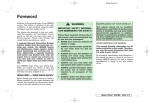
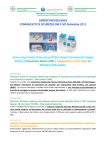


![Animas 2020 Insulinpumpe Handbuch [ - 2.6 MB]](http://vs1.manualzilla.com/store/data/006724865_1-055dda2762712b0186a185391654dcd9-150x150.png)
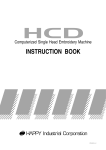

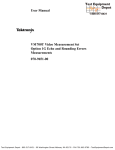
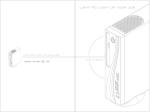
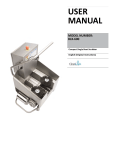

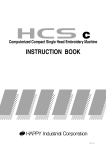

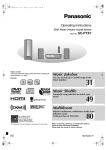

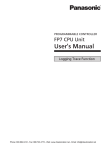

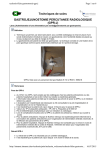
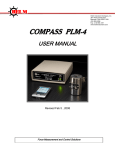

![Kurzanleitung [mmol/L]](http://vs1.manualzilla.com/store/data/006806971_1-c76eb7385965f7a9de4ffde87b17e82a-150x150.png)
